
‘Larry Gottheim is a key figure in the history and development of American avant-garde cinema through the 1970’s. His work often shares the simple structure of the earliest films but also relate to minimal, conceptual and process art practices. Gottheim is the founder of the extermely influential and first cinema department in the SUNY system at SUNY Binghamton.’ — Light Cone
‘Gottheim’s cinema is a quest of origins. The films elaborate a response to the fictions of our world, the construction of images and sounds, the repeating cycles of life and nature. The profoundness of Gottheim’s act is to elaborate a body of work outside of fashion and within a search for an authentic language of cinematic discourse.’ — John Hanhardt
‘Considering the theme of nature in art and functions of racial, cultural and personal identity, Larry Gottheim’s practice explores the ways in which time, movement, and becoming are bound up in a complex relation between formal cinematic patterns and pro-filmic subjects. From his late-1960s series of sublime “single-shot” films to the dense sound/image constructs of the mid-1970s and after, his cinema is the cinema of presence, of observation, and of deep conscious engagement. Whist addressing genres of landscape, diary and assemblage filmmaking, Gottheim’s work stands alone in its intensive investigations of the paradoxes between direct, sensual experience in collision with complex structures of repetition, anticipation and memory. Produced across twenty-five years Gottheim’s recent feature Chants and Dances for Hand extends and refines this exploration to its zenith. This programme seeks to open a dialogue between Chants… and his early works, tracing the ways in which the shifting formal patterns of his oeuvre might illuminate deeper engagement with the larger.’ — Close Up
____
Stills
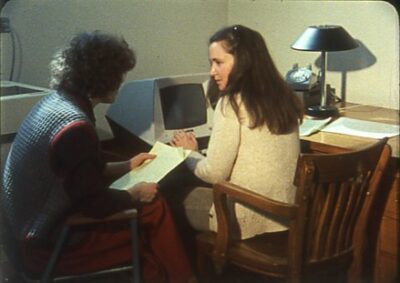
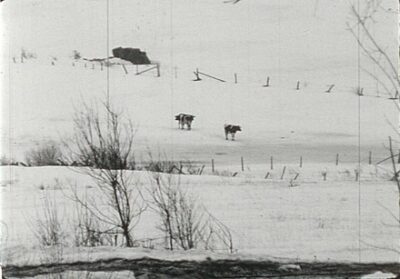
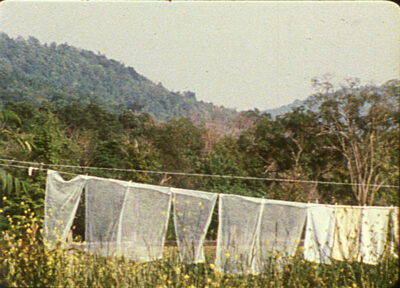

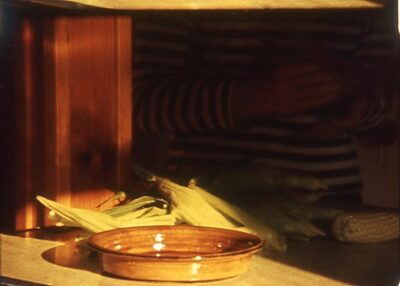
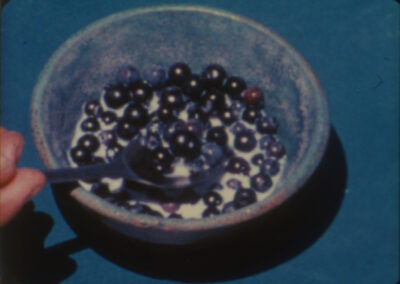
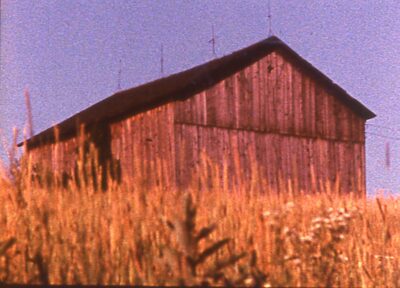
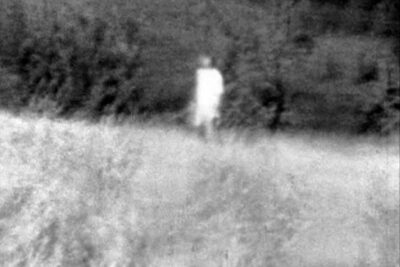
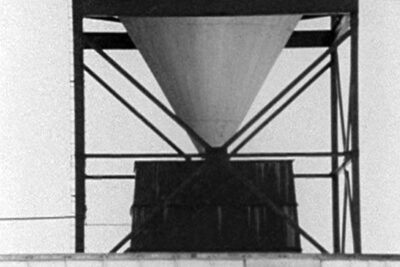
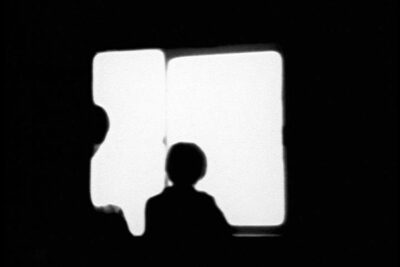
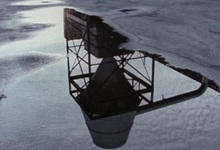

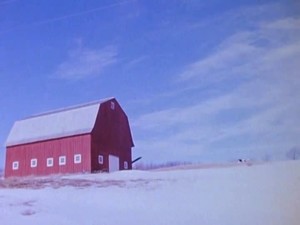
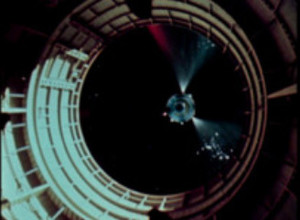

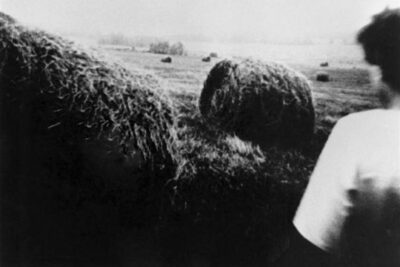
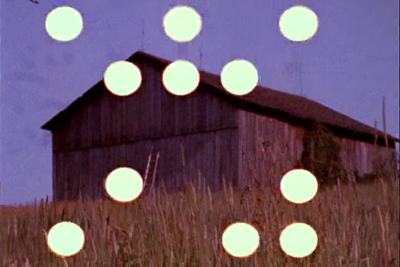
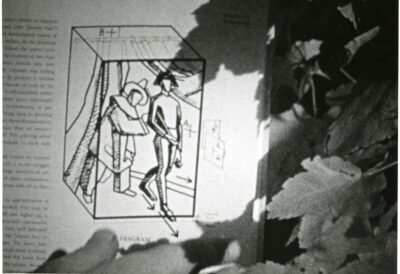
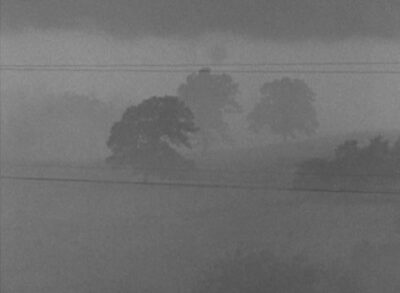
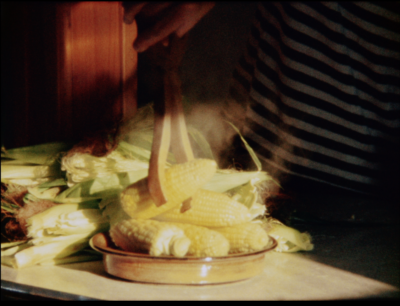


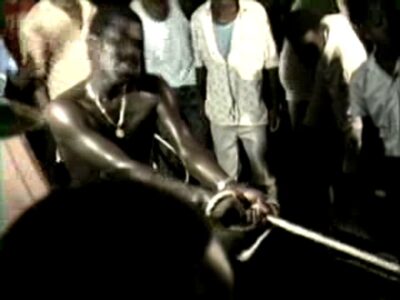
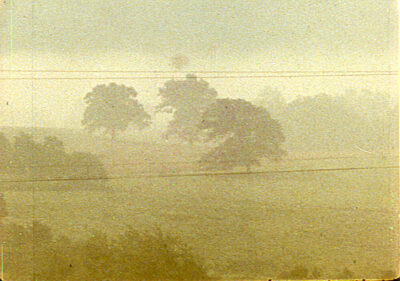
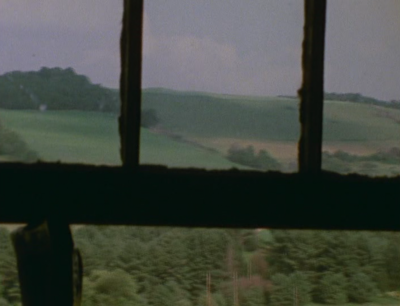

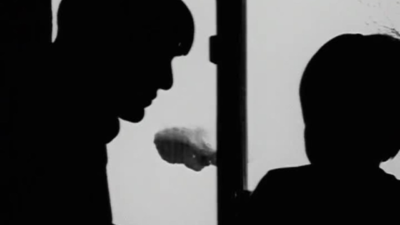

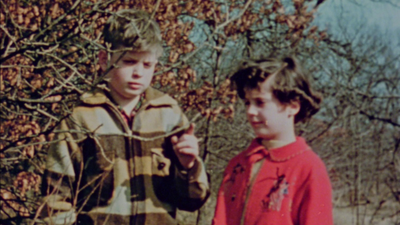
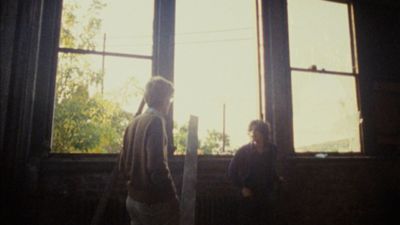

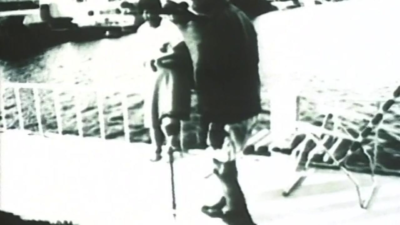
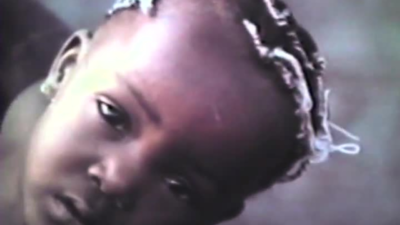

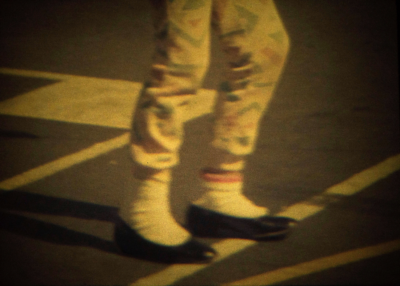
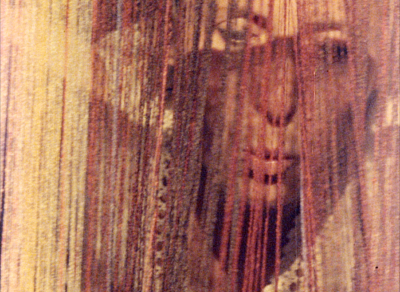
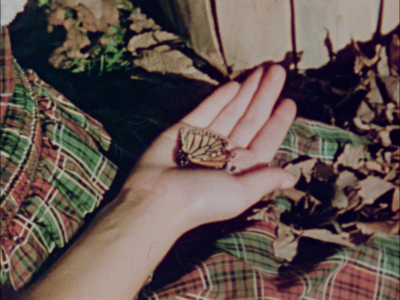
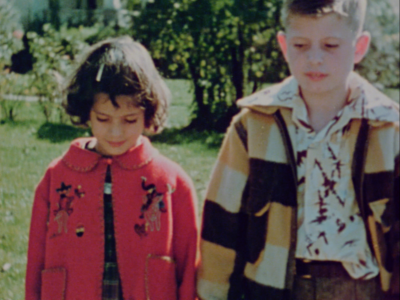
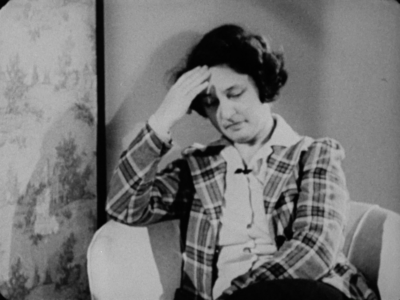

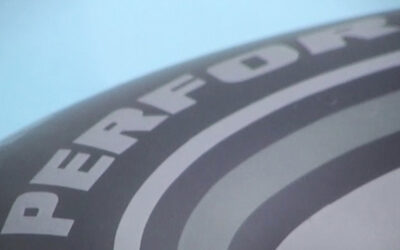
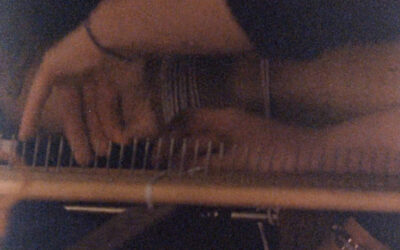
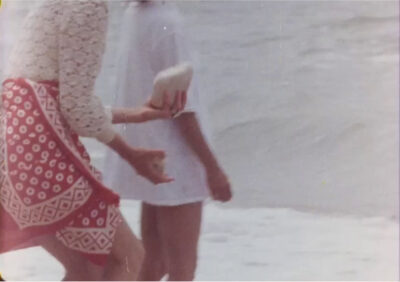
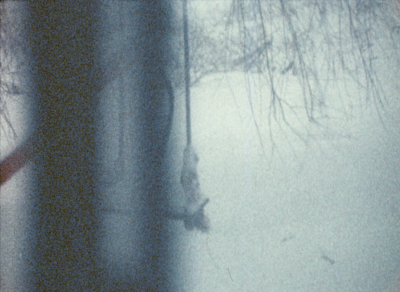
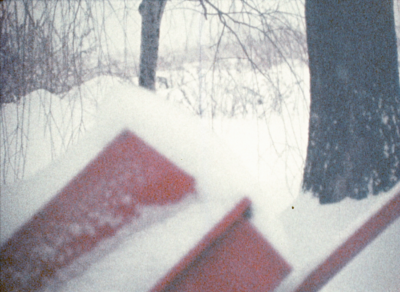




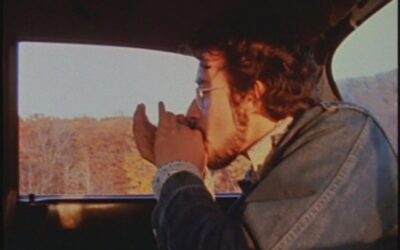
___
Stills
LARRY GOTTHEIM FILMS
Larry Gottheim @ Light Cone
LG @ Re:Voir
LG@ The Film-makers Coop
LG @ MUBI
LG @ IMDb
Larry Gottheim Collection of stereographs and other early photographs
Foglihne – Kent Maxwell
LG @ Letterboxd
New Digital Files from Larry Gottheim
LG @ Underground Film Journal
The expanding vision of Larry Gottheim’s films
Encounter with the films of Larry Gottheim
Fog Line, a film by Larry Gottheim @ { feuilleton }
Light Movement 22: Larry Gottheim
Cinema Parenthèse: Larry Gottheim
LARRY GOTTHEIM: SURFACE MODULATION
Four films by Larry Gottheim
____
Extras
The Films of Larry Gottheim
Lecture by Larry Gottheim
Larry Gottheim LA Filmforum February 7, 2020
________
Interview

Luke Burton: You came to filmmaking quite late, following on from an academic career that focused more on music and literature…
Larry Gottheim: This background in music and literature, instead of painting, embarrassed me for some time, until it began to creep into my work. I had a childhood love of the movies, of course, which was also connected with feelings about my father and going to the movies with him. I reconnected with the movies later when there was this upsurge of foreign films in the United States. Godard films, Antonioni films and Fellini. So that awakened a different kind of interest in film.
LB: But this was still before you actually started making films…
LG: Right. I had also started to see experimental films in New York, for example early Warhol films, that led me to film in another sense. There were two strains in my interest in film when I started making them. One was the narrative cinema, or the new forces of narrative cinema, and one was the experimental cinema that I had started to see. In retrospect I think Warhol’s films affected me most deeply. I did like the atmosphere that surrounded the screenings. I remember some of the very long films that started to play in non-commercial venues, for example a one-time all night screening of Four Stars (1967) that projected hour after hour of superimposed rolls. But the films that were most influential were the simple forms like Eat (1964) and Kiss (1963-64). A film I made from the first two rolls I ever shot was called Meet, which was kind of an homage to Warhol, although it took me another year to absorb his influence.
When I started filming I didn’t know which direction I was going. I didn’t think it was going to be changing my life the way it did. I was waiting for something to happen to get me involved in film, but it never came along. Eventually I bought a camera. I knew so little about film that I didn’t know the difference between 16mm and 8mm. I was able to buy a used Bolex with one lens. I then started to learn how to use the camera from the instruction book that came with the Bolex and just learned one element at a time. I also got involved with the film society at the university and that was also a kind of calling that seemed to come out of nowhere. They needed someone to run the society and I had this urge to run it. The academic career that was opening up for me started to seem unattractive, and the involvements that I’d had with art, with music and with writing that I had put aside when I had started to study literature in a more academic way, suddenly arose really strongly. The day I got the camera I checked it into a locker at Grand Central Station and made my way to the recently opened Cinémathèque at Wooster Street. The taxi driver didn’t know where Wooster Street was, as “Soho” was just a wasteland of empty lofts. I completely felt that I was a filmmaker. There was no transition – without even knowing how to use the camera, I was a filmmaker.
LB: Immediately after buying the camera just like it was some kind of performative action?
LG: That’s right, it opened up something. It took some time to feel somewhat comfortable to bring my interest in music and literature into the films because I was feeling the strength of film as visual art and felt this kind of shame that – of all the different arts that I had been involved with – it hadn’t been painting. Painting seemed so important as a preparation for film. In the evolution of my work it started with this approach. Wanting film without sound and having an overall responsibility to the image – that came from my desire to be a painter in film. Then slowly these other elements like music and sound and literature came into it.
LB: It seems in the early films, like a painter, you choose a fixed framed subject, usually one, and there’s a real sense that you have a deep focusing on this one subject. I’m thinking here of films like Blues (1969), Corn (1970) and Fog Line (1970) – all three films have a certain demand on the viewer. A demand where the viewer has to match the focus and level of intensity that the films are conveying. The idea and experience of perceiving comes through very strongly in those early works.
LG: One of the things about painting and drawing is the relationship between the hand and the eye and the marks on the surface. It was increasingly in later work that I felt I could use the camera and use my body with camera movements that in some metaphorical way had to do with the hand’s involvement with the making of the art work. The aspect of painting that comes out in films like Fog Line and those early single shot films is the overall responsibility for the canvass or the rectangle of the image. It’s coming about not through hand-work but through my thinking about a subject where the unfolding of light or the unfolding of change of some sort in front of the camera is producing the image. The painting analogy only goes so far, but it’s something important to me internally.
LB: In Tree Of Knowledge you used found footage for the first time. Some people would find the footage you used explicitly politically charged. It’s footage of paranoid mentally ill patients and one patient talks about her sympathies with the Nazis. What was your approach to that type of imagery, which seems so different from other kinds of imagery and sound you had used up until then?
LG: I have to qualify some of what I said before about the way in which the material for the films comes about, because there are certain potentialities that I do recognise in choosing something. Even with the Angelina Johnson recording there are issues such as race, music, blindness, love and death. It’s not as if I had no idea they were there. In the material that I chose for Tree Of Knowledge I recognised that there were elements that belonged to a body of themes. But they were themes rather than ideas. The documentary film of the doctor and patients is not looking at the human condition as a philosophical issue, but rather describing it as a psychological one. The film slowly uncovers for the viewer psychological issues that are different from those the doctor is trying to bring out, and philosophical issues that are deeper than what the patients are able to articulate. But the issues sounded by the doctor and patient are the openings to these deeper issues.
The association of the various elements in the films deepens the complexity of these issues. For example, the didactic film about the seasons modifies the issues suggested by the paranoid film. This is even carried over from film to film. The elements in one film are intertwined with the other elements through the “musical” editing structure, but for the viewer, who can experience the four films in sequence elements, they are carried over from one into the next.
LB: Looking ahead. When do you think this large-scale project The Opening will finish?
LG: Well, right now I think the nature of the film will mean it will take the form of shorter pieces that make up a longer work. In fact, I have so much material to work on that I can see it still taking up more and more of my time.
____________
10 of Larry Gottheim’s 18 films
_________
Fog Line (1970)
‘Fog Line is a wonderful piece of conceptual art, a stroke along that careful line between wit and wisdom—a melody in which literally every frame is different from every preceding frame (since the fog is always lifting) and the various elements of the composition—trees, animals, vegetation, sky, and, quite importantly, the emulsion, the grain of the film itself— continue to play off one another as do notes in a musical composition. The quality of the light—the tonality of the image itself—adds immeasurably to the mystery and excitement as the work unfolds, the fog lifting, the film running through the gate, the composition static yet the frame itself fluid, dynamic, magnificently kinetic.’ — Raymond Foery
the entirety
_____________
Harmonica (1971)
‘Arguably Larry Gottheim’s most exuberant experiment in the single-shot, single-roll format (and his first with a soundtrack), HARMONICA trains the camera on a friend improvising a tune in the backseat of a moving car. Held out the window, the harmonica becomes a musical conduit for the wind, while Gottheim’s film transforms before our eyes into a playful meditation on wrangling the natural elements into art.’ — Max Goldberg
the entirety
______________
Barn Rushes (1971)
‘The long way around the barn never looked so good Larry Gottheim composed BARN RUSHES from eight tracking shots tracing the same arc around a barn in different conditions The fact that nothing changes makes it all the much more apparent that everything does a meditative approach that Tony Conrad described as “a textbook of atmosphere, camera vision and lighting, as they relate personal concept to purely visual relationships ” The simplicity of the film’s structure echoes the functional design of the barn while simultaneously suggesting a distinctly cinematic equivalent to Claude Monet’s serial views of Rouen Cathedral.’ — Max Goldberg
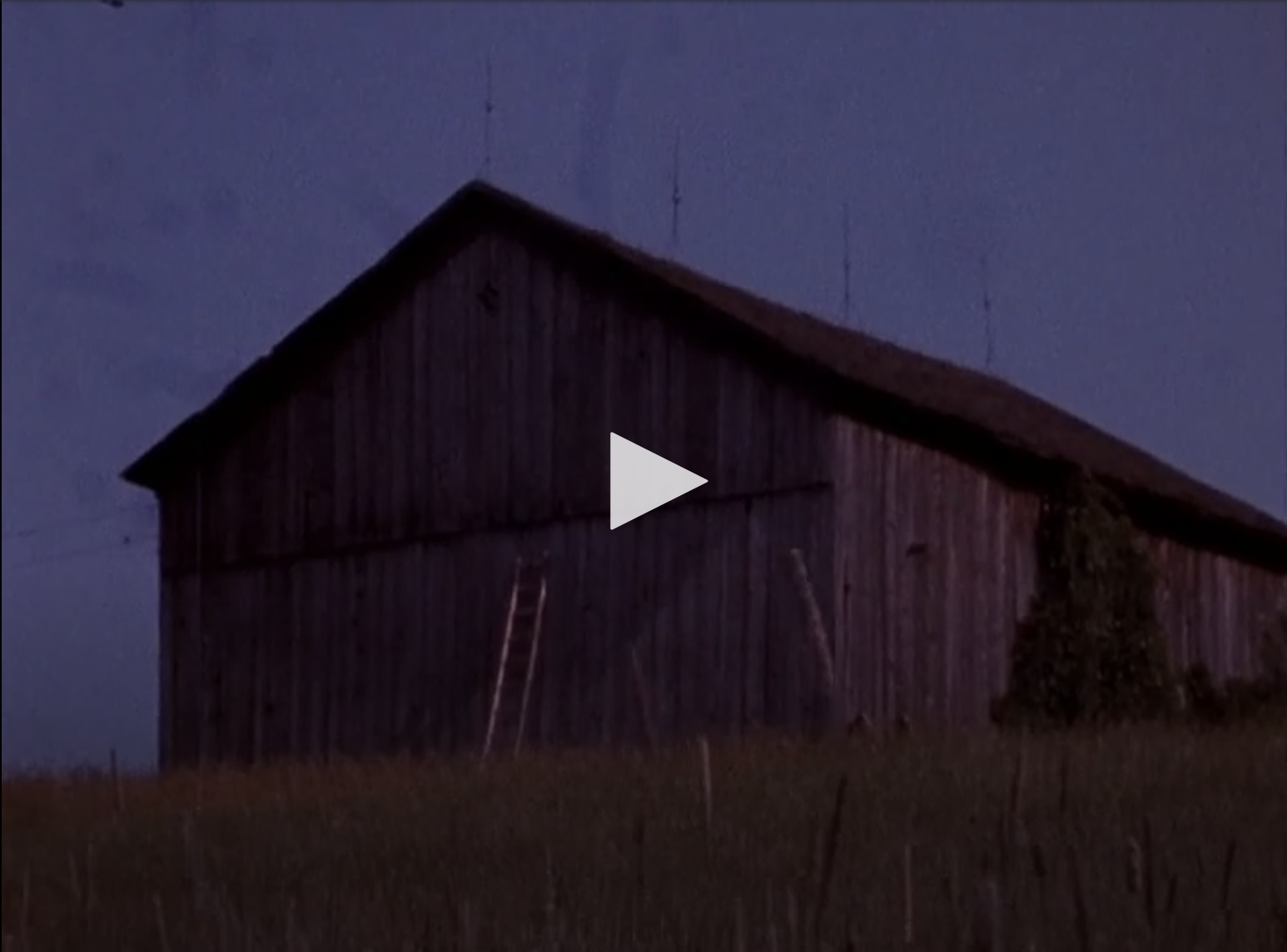
_____________
Horizons (1973)
‘Working with Virgil’s four-part poem “Georgics” and Antonio Vivaldi’s concertos “The Four Seasons” as models, Gottheim arranged his painterly compositions into four distinct sections, each edited according to its own exacting pattern. The seasonal flux thus informs both the form and content of the image, with the basic elements of trees, sky, hills and the occasional crisscrossing clothesline filmed in every imaginable light.’ — Letterboxd
Excerpt
_____________
Four Shadows (1978)
‘Like constellations wheeling round, a double chain of four image segments and four sound segments wheel past each other in 16 combinations – a family of Gibbon apes, a landscape measured, a shadowed diagram after Cezanne, a wintry urban scene, a text by Wordsworth, a climactic scene from Debussy’s opera Pelleas et Melisande …. The stately ceremony can generate rich sensuous cinematic pleasure as well as a free-flowing stream of associations. Containment and flowing free – these are some of the issues. The third film in the Elective Affinities cycle.’ — The Film-makers Coop
Excerpt
______________
TREE OF KNOWLEDGE Elective affinities IV (1981)
‘The final film of “Elective Affinities”. A central element is a documentary film about paranoid conditions. Another is a flow of images of an apple tree in my back yard filmed impulsively, without forethought, the opposite of the static camera of FOG LINE. The radical breaking with the previous passivity of the camera has deep psychological dimensions. That was the first thing that led me to bring the paranoid material into the zone of the tree footage. The elements of sound and image are closely matched to each other, frame by frame. Inserted in them at the heart of the film are images of children, Kenneth and Louise, from an instructional documentary about the seasons. Cries of cattle being auctioned and sent to the stockyards are also inserted. The children are central. They stand in for the audience of the didactic film about the seasons. They are both the ones who are learning and also part of the didactic mechanics of that film that represents and teaches received knowledge. The paranoid patients are also presented as instruments of instruction and at the same time subjects themselves who have absorbed in a distorted way knowledge they have received from religion, newspapers, common gossip. Their minds struggle with elements of the outside world that penetrate their attention – politics, new post-WWII technologies. The doctor who presents them is also in intimate league with them in this studio space. The narrator of the seasons film is his brother. The affinities between all these figures continue the theme of doubles that appear in my films. The film points to a deeper reality than what is on the surface. The explanation of the seasons is obviously correct. But in its didactic context it serves as a cover for something deeper. This material is repeated with different permutations of the sound material and the image material, once in the original sync sound and again with the other sound track, continuing procedures from the preceding two films of the series. All this is preceded and followed by continuous black and white negative images of the tree going from clear to black and reversed at the end. Each is accompanied by an important sound element. At the very beginning and end is a small piece with new material that points forward and back into a world outside the garden, that concludes the series of “Elective Affinities” and opens to new procedures…’ — L.G.
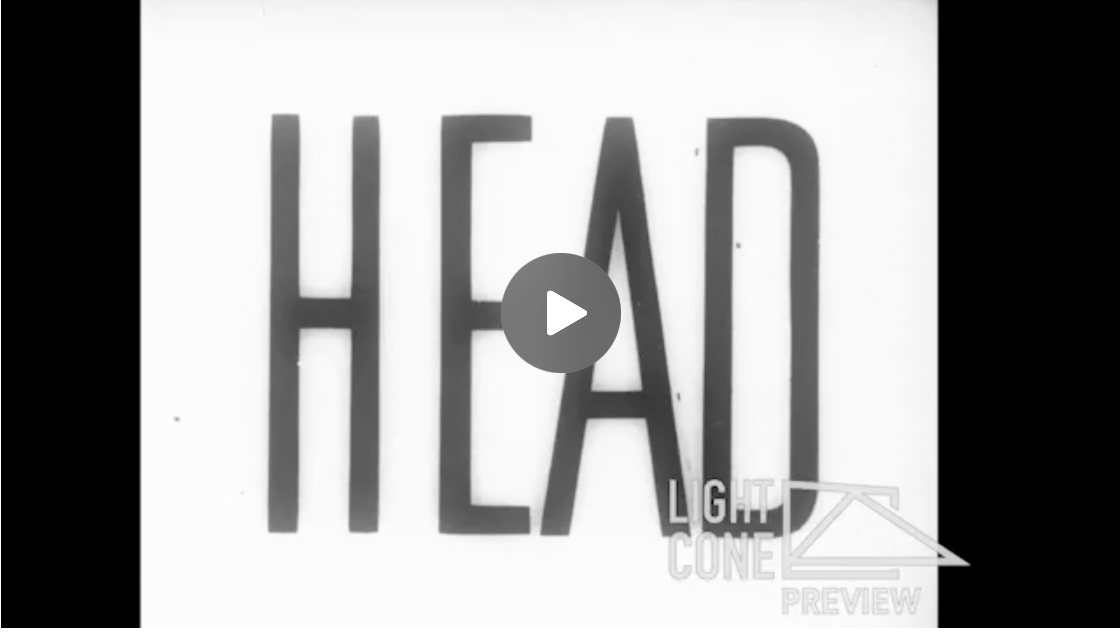
_____________
The Red Thread (1987)
‘Material from a time spent in California at the San Francisco Art Institute. My actual image appears as an ironic avatar of my real filmmaker self. It is challenged by a woman, a weaver with whom I was in a relationship. The mythic references are more than just ironic. Creatures appear. A tribute to women: Clara Schumann, Sally at the piano, Leonora, the cow-herding women of myth. The division into « acts » is a somewhat ironic echo of the formal structures of previous films. The real me, the filmmaker me, is there, for example in the piano passages and above all with the children in the schoolyard, a ceremonial dance. Leonora is connecting the making of this very film to my personal failings. The film itself shows how I transcend those failings.’ — L.G.
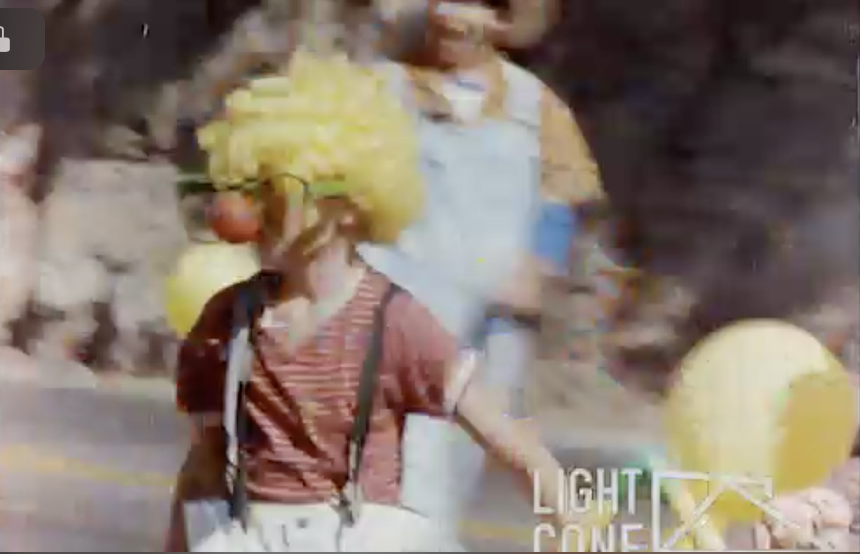
______________
Mnemosyne, Mother of Muses (1987)
‘Christened for the Greek mythological personification of human memory, MNEMOSYNE, MOTHER OF MUSES is Larry Gottheim’s facsimile edition of how one reflects on life and experiences (namely, in flashes and excerpts of sound and imagery) Typically known for his avant garde, single shot meditations on nature, Gottheim here provides a palindromic quotation of his own memories, including street corners, movie quotes, family members and Johnny Hartman tunes.’ — Noodle Magazine
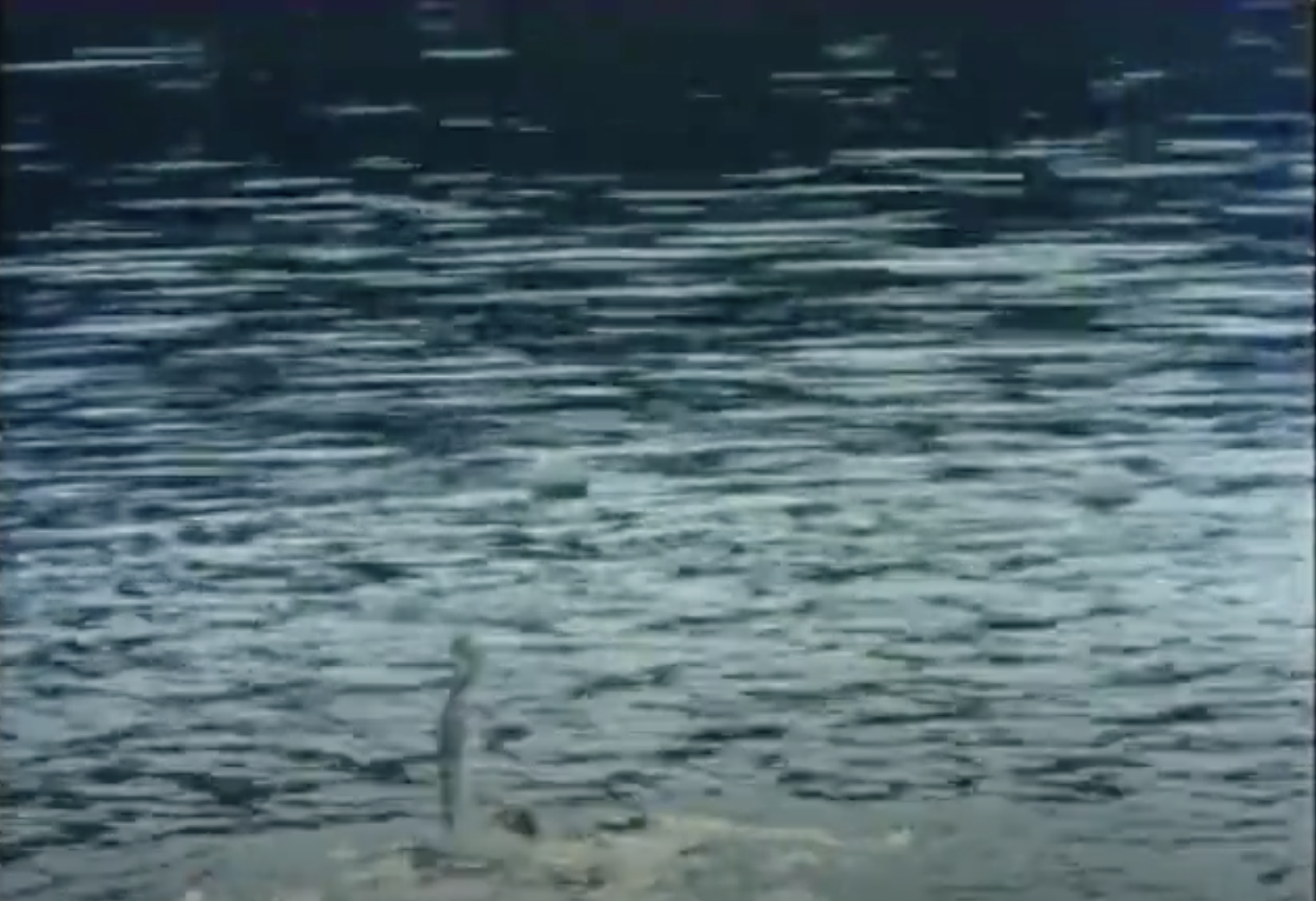
______________
Chants and Dances For Hand (2016)
‘Material shot in Haiti 1991, edited 2017. The central section is a group of scenes from a violent uprising, centered on soundless images of a burning body, the smoke invaded by electronic distortion. In an almost palindromic form sections from Vodou ceremonies and interludes of other material dance around it. It is not a documentary, but a fast-moving network of vibrant images and sync sounds that meet and collide stirring visual and sonic pleasure at the same time sparking associations with spectating, with the movies, with cooking, with history, and many other motifs.’ — The Film-makers Coop
Trailer
_____________
Knot Not (2019)
‘Four sections each based on a musical work, the first part of the multiplication table spoken in four languages. The increasing superimposition of images and sounds produces electronic color and new music with memories of classical music. Principle subjects deal with the conductor Wilhelm Furtwängler and with graffiti on a wall close to where I now live, far from the landscapes of my first films. Images from Pearl Harbor and Nazi Germany evoke history. It is not about what it is about. Like most of my films it offers several paths of memory. “Knot” is a tying up of threads within the work, with my life work and outside to the world. “Not” is a negation, an erasure, the death of death.’ — The Film-makers Coop
Excerpt
*
p.s. Hey. ** David, Ha ha, that’s the one thing you can be sure I’m not doing. But thank you, take care! ** Dominik, Hi!!! You won’t go wrong with either of them. Yeah, you need a little milk and some butter, neither which I ever buy or have on hand. Russel Brand has this youtube series that Yury watches sometimes where he yells and shrieks and tells brutally unfunny jokes at very high speed from a tediously standard fare libertarian/left perspective about whatever world wrong he thinks he can exploit to draw attention to himself, and his piercing voice and narcissistic antics literally make me want to crush his windpipe. So that’s why. Wow, hard to top your yesterday love. Just on a personal level, I’d have so many more friends. Love going back in time several days and making ‘The Batman’ a huge flop, G. ** David Ehrenstein, Le Clef had/has a very considerable range from very experimental films to wacky period comedy films. There’d be many ghosts. ** Tosh Berman, Thank you, Tosh. Derek’s book is a complete joy. ** Conrad, Hi. Too bad about Shit & Shine. I’ve never seen them, so I’m going to do my utmost. Maybe I’ll try that shorter Volodine book you mentioned given that long books are tough for me. Your mom is cool. Yes, I am hard to translate. I know that because whenever my texts have to be translated from English to French for our films or for Gisele’s pieces, it’s always a very long, meticulous and comprising process. Happy day, sir! ** _Black_Acrylic, Hi, Ben. Cool. Listening to Charles Ray talk is inevitably beneficial. ** Misanthrope, I think it’s easier if you just imagine the impulse and need and don’t bother imagining the act itself because ultimately it’s all about the psychological reward. I hate buying things. I buy things as rarely as humanly possible. I don’t know why. I like buying things for other people. Weird. I’m def. a morning/early day guy too, if you need a soulmate. ** Derek McCormack, Derek! Your book is so, so, so great. And your Zoom thing with Vince was completely joyous. I told Vince that whenever I hear you talk I always want to talk like you, but my mouth can’t pull it off. Biggest love to you, hero! ** T, Hi, T! I saw your email, but I wasn’t coffeed enough to open it yet but I will once I’ve skedaddled out of here. Great if you can come to the screening, understood if you can’t. Istanbul! Whoa! What did you do there? I’ve never been there myself. Just a dream so far. I’m thrilled to bits that you’re liking Joy Williams. I love bouncy castles. I did a whole post about them a while back. So I’m seriously down with your version of my day. I hope your day is immensely more like Welsh Rarebit than the sad excuse for a Welsh Rarebit that I begrudgingly ate at a self-styled authentic British restaurant last night. xo. ** Ian, Hi, Ian! We’re doing pretty good over here. We’re inexorably entering spring far too swiftly for my taste, but our winters are far less taxing than yours. How’s everything going with you and yours? ** RY/\N / angusraze, Hi. Oh, that’s very interesting about your process of lyrics constructing. I think I read that back when Brian Eno was making those insanely great early few albums that he worked somewhat similarly. But then I think I also read that Paul McCartney does that too, which means all bets are off. I love that idea/description of you putting a foot in each space. Super nice to think about. I haven’t listened to the EP yet, too busy yesterday, but any second. Yeah, our bad experience was with Polyvinyl, but it’s obviously a terrific label, so yeah, very cool. ** Brandon, Hi, Brandon. We’ll know tonight. We pretty much have decided that we’ll shoot our film in September however good the news is. We realised it’s too tight to be ready June. Which sucks, but okay. Doris Wishman: great. Was the duo everything you hoped? I’m glad you like the Colin Newman. Luck on getting the tattoo appointment set. I have zero tattoos, I don’t know why. I’m unmarked. A few scars, but … Excellent Tuesday, sir! ** Brian, Hey Brian. They’re good stuff, those books. ‘The Ghost Soldiers’: yes, definitely go for it. Oh, I see, you have to schlep equipment there and back. Now I definitely get your trepidation. Uh, Uber? (I’ve never used Uber except when someone has sent one for me in my life, so I don’t know). I haven’t seen the Kinuyo Tanaka movies, no. My friend Ange, whose opinion I trust, saw one, and he said it was very interesting but maybe not amazing. I’m still curious, although I think I’ve missed the theater engagements. Yes, Bresson is very practical and clinical about his work. I too found reading his texts and that great book of interviews with him, etc., made thinking about his work, and trying to coopt it in my case, seem doable. Well, tonight is the producer meeting, fingers crossed, Like I told Brandon, Zac and I have decided to wait and shoot the film in September whatever happens, but I’m hoping very much that we’re extremely close to having the funding. So, doing that and some writing and stuff. You + Tuesday = ? ** Okay. Today the blog focuses on Larry Gottheim, who, like the vast majority of experimental filmmakers, is very under-known and way too undervalued. But you can start to rectify that by looking through his work and making it part of your mental fabric or whatever. See you tomorrow.




 Now available in North America
Now available in North America 
Nice to see this nearly-forgotten figure from the experimental cinematic past so well remembered.
All together now
Death To Putin and his Sock Puppets Donald Trump and Tucker Carlson.
Oh dear, is “The Batman” not good, then? I haven’t seen it yet myself.
I posted a comment on here yesterday, fairly late in the night, and I’m not sure if maybe you missed it or not, so I’ll repost it again now:
Hey Dennis, glad to see Alexandrine Ogundimu up there, I just finished AGITATION myself a few days ago and really dug it… she’s certainly becoming one of my favorite writers amongst the AS stable.
Other books I’ve read recently include Thomas Ligotti’s PARADOXES FROM HELL (a very belated Christmas present: I’m one of the lucky 100 to have the signed hardcover version as I literally ordered mine less than a minute after they went on order, which was a smart move as they sold out in 2 minutes). And today I finished Kristin Swenson’s A MOST PECULIAR BOOK, an entertaining examination of some of the weirder passages in the Bible (and trust me, there are plenty to choose from, ha ha).
I forgot to mention this, but there’s a new Neo-Decadence anthology coming out in the summer, from Zagava. The hardcover editions are up for pre-order now, though in the future there will also be a more affordable paperback version, with cover art by Gea Philes. I hope (with Justin Isis’ help) to put together a day for it for this blog at some point for when it gets closer to the release date, if you would be so kind as to host such a thing? Obviously I’m a little biased about it what with my having a story in it, but I think it’s a pretty impressive line-up, and you probably recognize a great number of the names in it: https://www.zagava.de/shop/neo-decadence-evangelion?edition=8
Larry Gottheim is a new name for me, no surprise. Interesting that he’s upped sticks from an academic background and successfully moved over into film. I’m trying to switch disciplines myself from art to writing, and it’s not an easy thing to do. Just got feedback from my tutor and she says that I have an obscure sense of humour. I take as that a compliment for sure.
Watched that Charles Ray lecture last night and it’s fantastic! There’s a few more in that series to come as well, so it’s quite the public service he provides.
Hi!!
Hm, okay, wow; I’ve been living in total ignorance about Kraft Mac & Cheese.
Hahaha, oh no. I’m really sorry you have to go through this Russel Brand hell on a regular basis. I… don’t think I’ll watch any of his videos. Best to keep my ears and mind virgins.
Yeah, my love came from the bottom of my heart yesterday. The world would be so much richer if he’d succeeded.
I just googled the new Batman (that’s how up to date I am about such movies) and was a little surprised to see that Robert Pattinson’s Batman. I don’t know why. Love swapping the faces of Dwayne Johnson and Timothée Chalamet, Od.
Hello Dennis! How are you?
Thanks a million for this introduction to a new (to me) filmmaker. I watched Harmonica this afternoon and loved it. I always thought I hated the mouth organ but there you go.
I hope things are great with you. I’m okay and have been enjoying Brussels lowering of Covid regulations with frequent cinema trips. The experimental film club that I told you about is still going full steam, their last night was an evening of films by Jerome Hiller. Do you know his work? Really nice films, mellow and almost trippy. And they’re putting on six screenings at the end of the month so, of course, I’m excited about that.
Excellent book choices yesterday. I read Derek McCormack’s Castle Faggot a month or so ago and I think it’s my book of the year already. I’ve only read Zeke by Alexandrine Ogundimu and I absolutely loved it (it’s available online here, in case you or any blog readers would like to read it https://cross-radical.itch.io/zeke ).
Bonne journée!
Much love,
Jamie
I always thought Russell Brand was an annoying rich hippie, but apparently he’s now using his YouTube channel to promote anti-vaxx ideas.
So the timetable for a shoot is now September? When will you and Zac start locking down locations in California? How much of that work can you do long-distance? Do you plan to cast non-professional actors again?
I saw FIRST TIME, a 50-minute German film shot on Hamburg’s public transportation, yesterday and really liked it. It’s like an anti-capitalist, gay BEFORE SUNSET, except that it avoids the temptations of storytelling, and it also dodges the cliches of minimalist slow cinema.
Yeah Istanbul was really sweet! You mean you’ve dreamt of going to Istanbul? I have a friend who’s lived there for a year, and might be going back to the UK soon so I thought I’d better go now whilst I could score free accommodation. I only had 3 full days pretty much, so it was mainly the whole tourist thing, ate a whole lot of amazing food, and otherwise hung out with my friend, which was sweet as it comes. I watched ‘Fog Line’, ‘Harmonica’. I was trying to think of the best word to put on them, and I’m not sure if I found it but incantatory comes to mind. Like they’re these little seeds or pearls or tabs that kind of unfold in these 10 minute parcels. I watched ‘Mnemosyne Mother of Muses’ too, but something about that kind of hauntology genre whatever, or collages about memory with lots of old stuff kinda irks me. Dunno how you feel about it. I actually had to google Welsh rarebit, because it’s something I know by name only, so it’s like…cheese on toast? How the fuck can you mess that up, haha. What’s the lowdown on your producer meeting? Wishing you a Wednesday that comes to you with several ferrets hidden in its jacket, xT
dennisss
thank you so much for your kind words on my approach to stuff, yeah, I believe alot of my artistic philosophy has been to try and take up space, my initial personal manifesto for the angusraze project was primality at the front, a sort of attempt to deconstruct myself animalisticly to this primal sort of erratic (Or erotic) nature lol through performance or vocals or whatever, then, I became somewhat lost in the trappings of the statistical nature of the music industry, jealousy became something I felt, insecurity, things I am not proud of at all, but it helps I can recognise that in other people, and somewhat empathise with them in the sense that they will too come through it, then I woke up one day, and wrote a song called Freak Siren in a notepad I have (which I hardly ever do – write down lyrics with no beat i mean – and it acts as a rejection of algoyrhym and a pledge to myself to return to that core intention, to put it securely back on track. When I want to get signed to a label it’s moreso these days so I can like, get more opportunities to disrupt to take up space, to create these frictions, I guess similar to death grips, Like, i dont want to fuck with people It’s moreso it just allows me more of a platform to challenge conventions and such
anyway I was fucking around with this a few days ago take a listen:
https://www.dropbox.com/s/pktqnxe9scbwd2x/ZZZZZ.wav?dl=0
lots o love
ryan
Hey Dennis,
These films will form a playlist for my day off on Wednesday. Thank you for introducing me to them. I’ve solved the problem of getting the equipment back, at least: my brother is going to tag along and help me carry it back. It’s getting it there that remains to be solved. Ange’s words have me cautious as movie tickets are pricey. But I’m very curious about “Love Under the Crucifix” at least, because the title is great and the color looks lovely. How’d your producer meeting go? Amazingly well and perfect, ideally. My Tuesday brought two events: the development of our first film project (it mostly looks nice but some shots are so overexposed as to be basically unsalvageable, which leaves us with about a minute or a minute and a half to present, and it’s extremely slight, really, but what is she really asking of us from this assignment anyway, other than learning the equipment? I don’t know. At any rate it’s very satisfying to hold a canister of film in one’s hands), and the attendance of that new “Batman” movie, which my dad wanted to see, so I tagged along (it’s not for me but it’s a perfectly serviceable movie). And the Criterion sale: picked up a triple whammy of “The Innocents” plus “The Night of the Hunter” plus “Blue Velvet” (this last one I’ve never seen), while my brother went for the Tati boxset. Very movie-centric Tuesday. I’m okay with that. Tomorrow goes to essay writing and Larry Gottheim. And maybe I’ll watch “A Man Escaped” for the first time. You?
Hey Dennis, THat’s cool that you have a set filming time though! Is the film on similar themes as your last two film projects? Scars are kinda like miraculous tattoos in a way. Time marking you but you can get rid of it if you leave it while healing, lotion after, stay out of sun, etc. I (stupidly, but compulsively) pick at my skin/wounds, I probably have more scars than tattoos. Spoke too soon about the week, I got horrible sleep last night, almost none haha. Super tired, gonna try to sleep early. Talk more later, have a good one tomorrow!
-Brandon